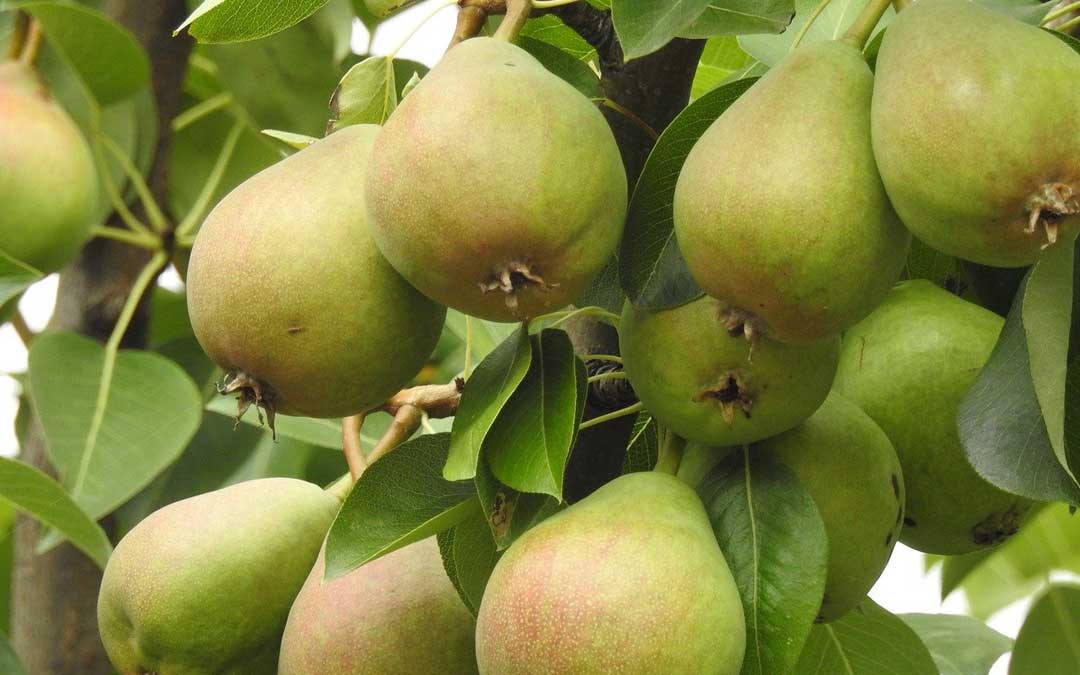Coddle your apples, pears and quince trees against codling moth

What time of year do I need to protect my trees from codling moth?
It’s now a good time to protect your apples, quinces and pears from the ravages of codling moth. While any time is a good time to intervene in the lifecycle of the codling moth, they will lay their eggs on the leaves of blossoming trees in spring and renew their lifecycle so intervening at this point is wise.
The codling moth lifecycle comprises:
- Egg stage in spring.
- Larval stage in spring and summer where small caterpillars begin eating the leaves and then tunnel into developing fruit.
- Pupal stage, where the caterpillars leave the fruit in late summer and create a cocoon in winter.
- Adult stage, where the cycle begins again as the moths are born.
If the weather is right, this cycle can repeat itself 2-3 times a year. The first generation will cause fruit to fall from the tree, the second and third are the ‘worms’ in your fruit, and the third generation is the one that pupates over winter.
How to recognise codling moth
The moths are grey with brown bands and bronze markings and have a 20mm wing span. They can be 10-15mm in length. They tend to crawl up tree trunks when they hatch from their cocoons rather than fly.
Tiny brown holes on the skin are evidence of infected fruit and the black poo trails going from the skin to the core (where the caterpillar feeds on the seeds). There is no remedy at this stage. Discard any fruit including any dropped on the ground. Burn it or feed it to chooks but do not compost it. Do this weekly.
How to prevent codling moth
Good garden hygiene is essential to deter codling moth. When the caterpillars exit the fruit, they look for crevices in the bark of the tree, litter in tree forks, or mulch/leaves on the ground in which to create their cocoons. Clearing out loose bark, litter in the junctions and mulch/leaves in the vicinity of the trees is a good start.
There are numerous ways of deterring codling moth, some physical and some chemical. Personally, I find chooks best, especially if confined to an orchard. They will rummage around the base of the fruit trees and eat the young moths. However if you don’t have chooks, you might like to try one of the following methods.
Tie a 5-10cm strip of corrugated cardboard around the trunk and large branches of each fruit tree in November and January. The cocoons will form in the corrugations. The cardboard should be replaced every 3 weeks and burnt, with the cardboard sleeves replaced (this can be done year round if you have the energy!). Similarly, you can create a ‘home’ for the cocoons by building fence paling traps which consist of 30cm paling offcuts, screwed together with a 5cm gap. These create a place for the caterpillars to form their cocoons. Hang these traps in the trees and inspect the traps every 3 weeks, clearing out any pupating larvae.
Bait traps are also effective. Use a plastic bottle with a hole cut in the side, hang it in the tree and fill the base with a 5cm depth of molasses or diluted port or sherry covered with a cooking oil. The sweetness is attractive to the moth which will enter the trap and become caught in the oil. The moth can also be trapped by sticky horticultural glue painted around the tree trunk and scaffold branches, and by pheromone traps which you can purchase from nurseries.
Chemical treatments include pyrethrum (which I don’t recommend as it is a wide spectrum spray and kills beneficial insects as well), Dipel (which needs to be timed well and is only effective once caterpillars have developed) and eco oil (also time sensitive as you need to locate all eggs on leaves – and an adult can lay 60 at a time – and smother them with the oil).
Clearly, prevention is the best method and using an integrated pest management approach year round that incorporates a number of methods is most effective.
Written by Robin Gale-Baker
First published in the Local Food Connect newsletter
